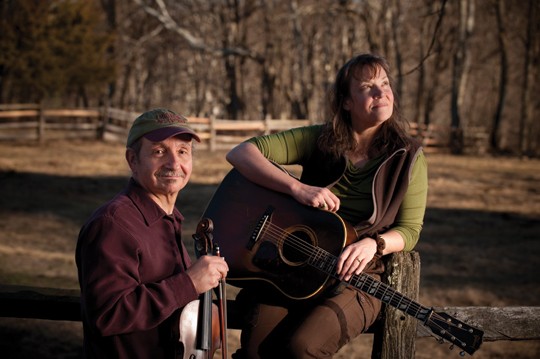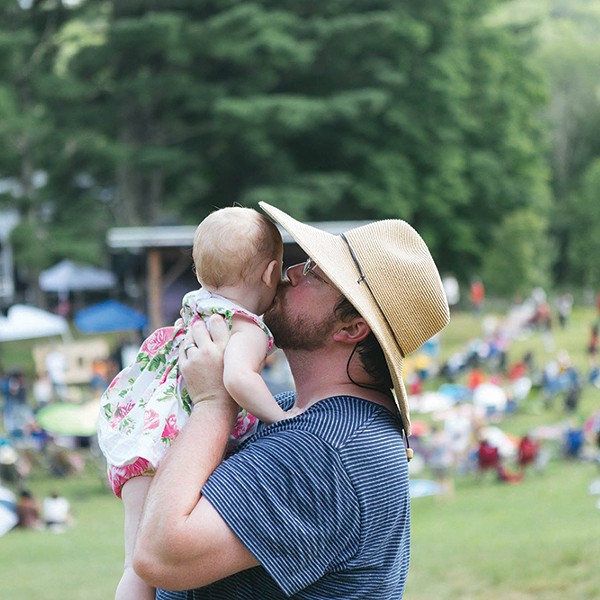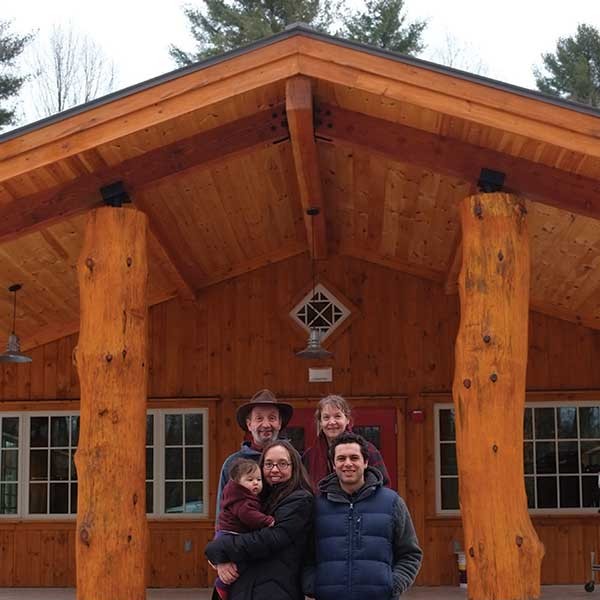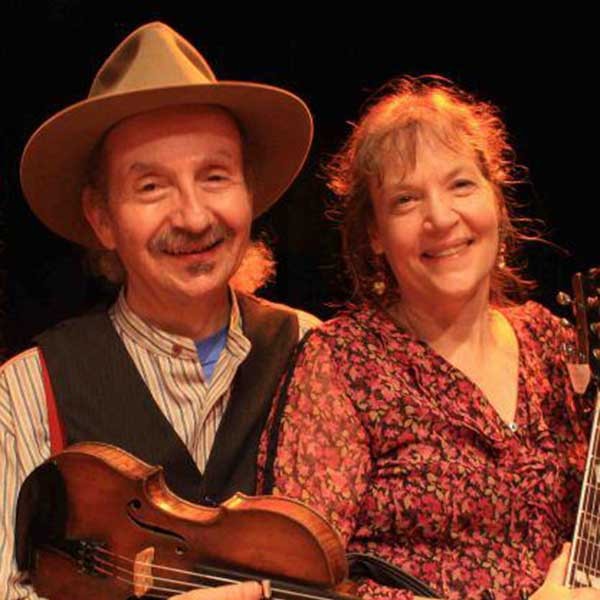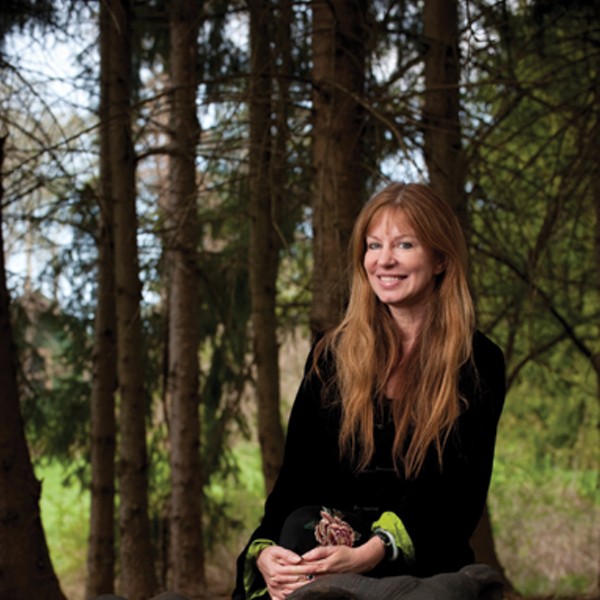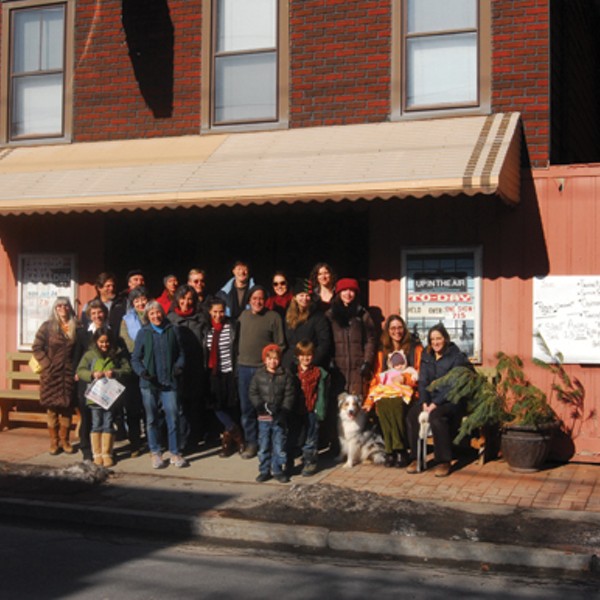Perhaps you’ve listened to their monthly music program on WAMC’s “Dancing on the Air.” Or you watched Ken Burns “Civil War” documentary miniseries and noted the haunting (and Grammy winning) soundtrack that won the couple international acclaim. Maybe you’ve attended Fiddle and Dance Camp in the Catskill Mountains sometime in the past 30 years, or one of their innumerable local performances. Suffice to say, Jay Ungar and Molly are local music icons, standard bearers for traditional American acoustic music.
Four years ago, Ungar and Mason started the Ashokan Foundation, a nonprofit which now manages the former Ashokan Field Campus, run by SUNY New Paltz, a 300-acre campus set in a Catskill Mountain hollow hard by the Ashokan Reservoir in the town of Olivebridge. www.ashokancenter.org
What was the motivation to form the Ashokan Foundation?
Mason: Jay and I were planning our summer Fiddle & Dance Camps at the Ashokan Field Campus in 2006 when we heard that SUNY New Paltz was trying to sell the camp. Our programs had been running for nearly 30 years, and the outdoor education programs for schools had been going for almost 40 years. We feared that a new owner might have other ideas for this beautiful and historic property, like housing developments, a shopping mall, or logging.
Ungar: So early on, we called together people who cared about Ashokan’s future, both long time visitors, and the people who work here. The Ashokan Foundation was soon formed and we were able to partner with the Open Space Institute and the New York City Department of Environmental Protection to save the place and the programs.
Mason: We soon began to learn more about the outdoor education and living history programs that were pioneered here in the 1960s and have attracted schools to Ashokan ever since. We learned that five or six thousand school children come here each year, and for many it’s their first chance to experience nature.
Ungar: We knew from our Fiddle & Dance Camps that adult groups can achieve community quickly at Ashokan and we soon learned that school groups tend to form strong bonds here as well. We kept hearing from teachers what we’d suspected for years—it’s something about the place and about hands-on learning. You come here to experience something, be it nature, history, music, and dancing, or just the great outdoors. You don’t see it on TV, you don’t read about it, you aren’t lectured about it—you do it with others and you build connections.
What’s it like for students who visit the site for the environmental education and living history program?
Mason: It’s like walking into the 1830s. You may get to hike through the woods to the Sugar Shack, collect sap and help make and taste real maple syrup, or visit the Indian Village and learn how our native forebears lived on the land.
Ungar: At a museum or a historic site, you see rooms from the 18th and 19th century, but there’s a rope across the door so you only get to look in. Well, here at Ashokan’s 1830s homestead, children go in, sit in the chairs and use the utensils. They get to help with chores, sit by the fire and bake ginger bread, or cookies. The entire building is furnished with period furniture, tools, and utensils, so you can see how people lived in the past. You’re part of it. You live it.
The Ashokan Center is currently in the midst of a capital campaign. What are you raising money for?
Molly: We need to raise money for new buildings and to keep Ashokan’s programs going. The DEP now owns the portion of the camp along the Esopus, where our main camp buildings stand. They plan to remove these buildings to allow greater releases of water from the Ashokan Reservoir for flood control and to help assure the purity of New York City’s water supply (large amounts of turbid water are released to avoid the need for filtration). We need to have our new buildings in place on higher ground before the old ones are removed in the second half of 2012, or our programs will be disrupted.
Ungar: We’re looking at this forced relocation as an opportunity to replace these old, energy inefficient buildings with a more sustainable, green facility that can teach visitors young and old about sensible and appropriate energy use for the 21st century. The new Ashokan Center will be an ideal meeting place for groups interested in the environment, farming and sustainable energy use. The DEP and the Open Space Institute have become partners in our future success. Both have contributed substantially towards our building fund, as has the Catskill Watershed Corporation and hundreds of individuals who love Ashokan and want it to continue to be a place where future generations can experience nature, history, and the arts in Ulster County. We’ve come a long way, but we’re still short of our financial goal. Anyone interested in helping and learning more should visit ashokancenter.org.
What new directions are in the offing for the Ashokan Center?
Ungar: We’re starting gardens this spring so that kids who come here can learn where their food comes from. It’s one of our goals that over the years, more of the food you eat at Ashokan Center will be grown right here on the property and that visitors of all ages can have a hands-on experience with farming and gardening.
Mason: Some of this land was farmed generations ago. Bringing agriculture back to this place and bringing farming and gardening into the programs for children is really exciting.
Ungar: We started a tree nursery last year. This spring some of those young trees will be planted out on the land and we’ll be starting new ones. They’re all fruit or nut bearing trees, and also berry bushes. The idea is to create an edible landscape and we’re working with permaculture consultant Ethan Roland to make it happen. Ethan’s also starting a weekend Forest Garden Immersion Series at Ashokan. It’s a long-term plan, starting with the tree nursery and gardens this spring and expanding as we are able.
Mason: We’re also thinking about water. We’re so close to the Ashokan Reservoir. Everyone who comes here sees the Reservoir, but some don’t know what it is and why it’s there. We want to ramp up the knowledge by teaching about water, and that this stream right here comes out of the reservoir, goes to the Hudson River, and the water in the reservoir, of course, goes to New York City for drinking. And how important it is to keep it safe and keep it clean.
Ungar: We’ve begun talking with the DEP about collaborating on a program about water. We want to look at global water issues on a macro scale, then on the micro level, learn about this particular watershed and how it reaches people’s taps in New York City.
Mason: And in a couple of years we’ll have new green buildings that teach, where people can learn how they’re constructed and insulated and about their special energy saving features. They’ll tie into a sustainability program for fourth, fifth and sixth graders. We want everyone who comes here to be inspired to find ways to save and conserve energy.
Ungar: We and the great Ashokan Center staff have been creating new public events so that people in the community can experience the place throughout the year. We have an Earth Day Celebration in April, Ashokan Civil War Days in May, an Eco-Heritage Festival at the end of the summer and more.
You’re working musicians and now you run a not-for-profit organization as well. How do you juggle the demands of these jobs?
Mason: Sometimes I wonder about it. In fact, during the last six months to a year we’ve joked that when we go out on tour, it’s like a vacation! It used to be work and now we’re like, “Ahhh.” We get to play music and travel. It’s almost like time off.







